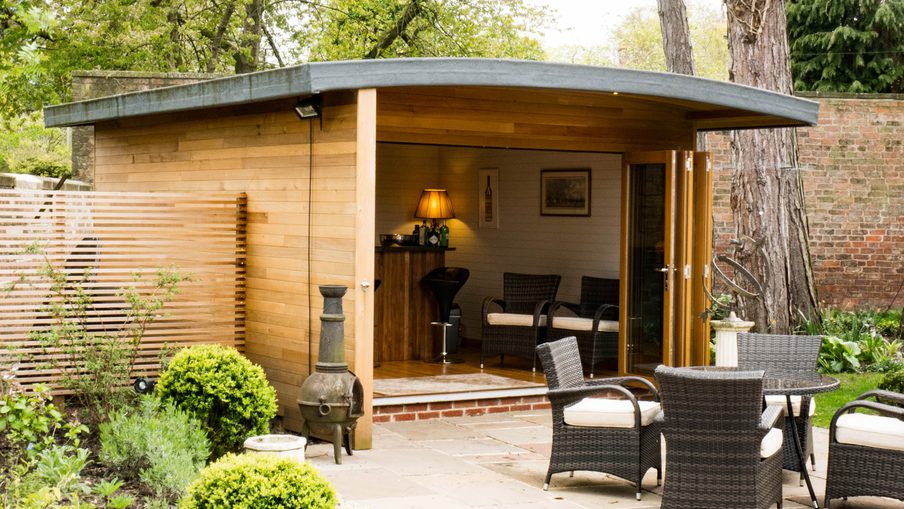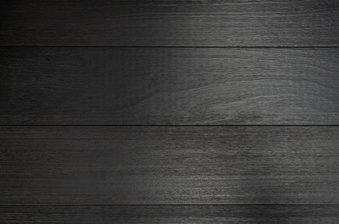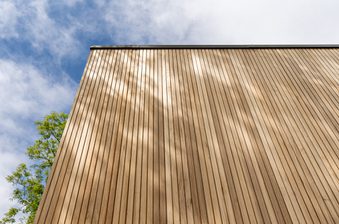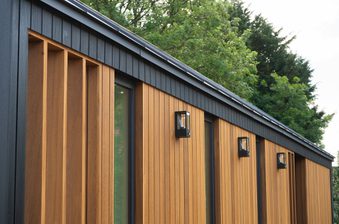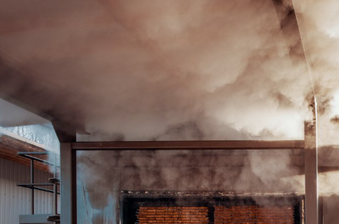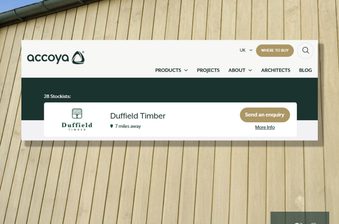Cladding can add beauty to any garden room, house or commercial building. But is solid wood better than a wood-plastic mix (also known as composite)? It depends what your priorities are.
The short answer is that solid timber cladding provides a superior natural aesthetic, with a choice of different species and profiles, and is a more environmentally-friendly option. However, it does require some commitment to upkeep.
Composite cladding is a lower-maintenance option that has a more uniform appearance, but ultimately lacks a truly authentic look.
Timber cladding
Wood cladding comes with all the unique grain patterns and natural markings you’d associate with something that is the sole product of a tree. This makes it a unique, one-of-a-kind product that offers a timeless, nature-connected look – something home improvers and architects value highly, particularly with the recent focus on biophilic design.
There is freedom of choice from a wide range of species, each with their own characteristics. Think the reddish-brown and pinks of western red cedar, and the golden browns of Thermo-Ayous.
Its colour can also be customised to a range of other colours. It can be coated to have a dark brown-black charred look or thermally modified (as in Thermo-Ayous, Thermo-Pine and Thermo-Tulipwood) and take on a exotic hue. This heat treatment process also improves the wood’s outdoor durability and stability!
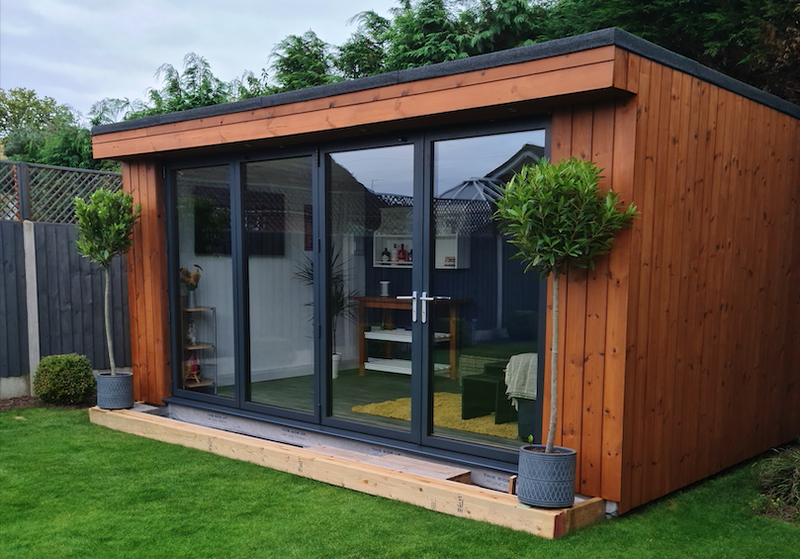

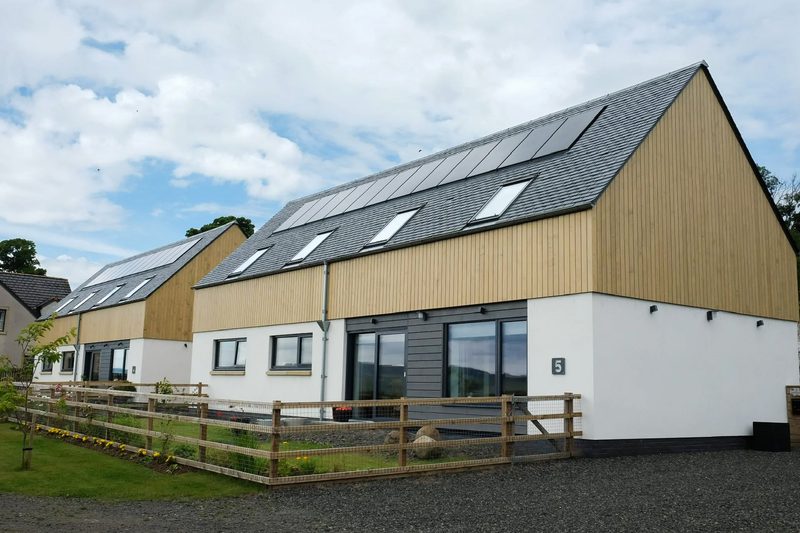
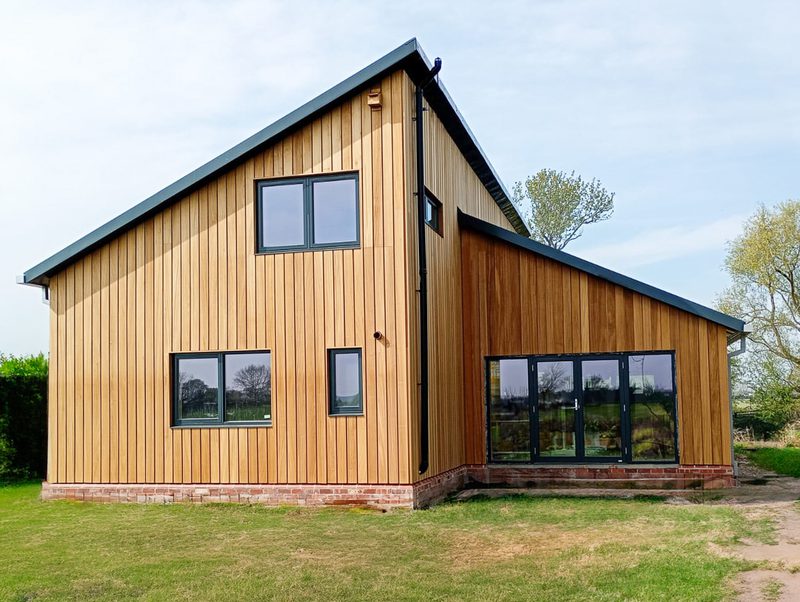
As a natural product, the appearance of wood cladding can change and evolve over time, even taking on a rustic grey look – but this can be prevented with a treatment and occasional maintenance.
Wood cladding can also be machined to a range of profiles. This includes traditional, rustic options like feather edge, but also modern, designer cuts like shadow gap, square edge and V-groove.
Another bonus for eco-minded project planners is that wood is a 100% biodegradable material. Timber cladding can last for decades too, as long as it is properly maintained.
The main downside to wood cladding is also what makes it so aesthetically pleasing. As a completely organic material, if it is not appropriately treated and maintained, it can be susceptible to damage from moisture, bacteria and fungi. This can make solid wood less durable and dimensionally stable than composite options.
It can also be more challenging to install – wood cladding is a more ‘imperfect’ product and can splinter. Installation should ideally be done professionally to prevent issues such as bulging or warping.
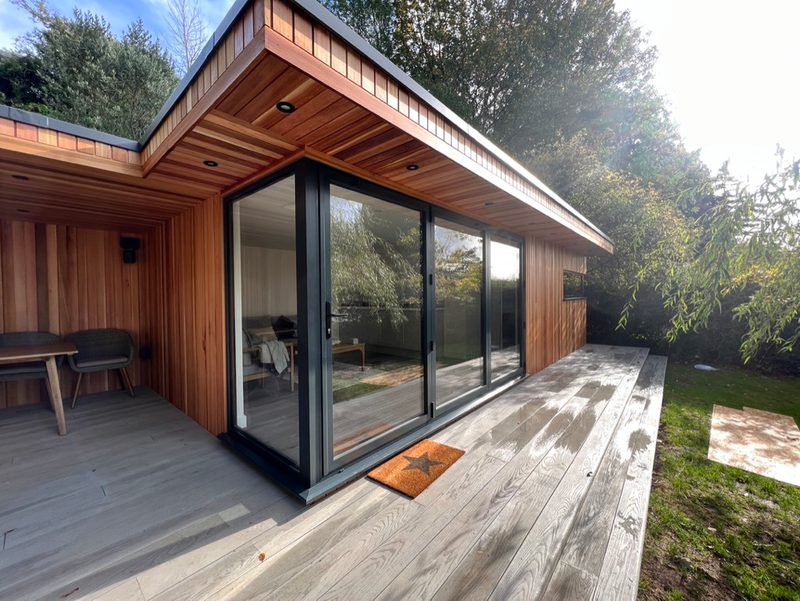
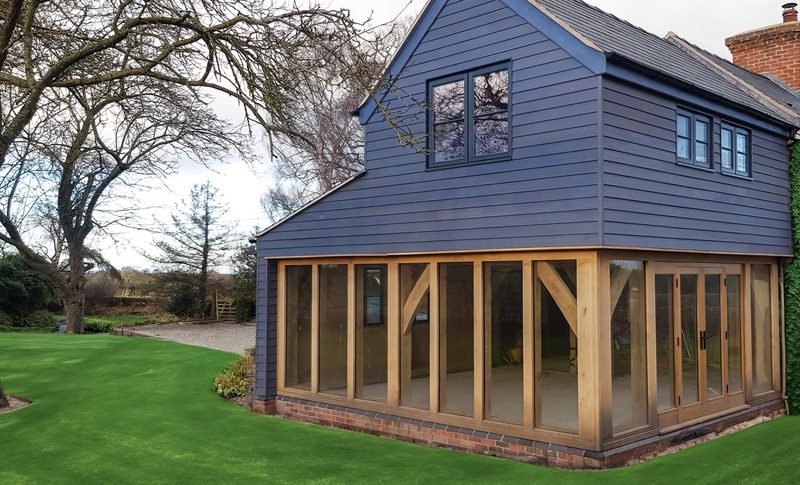

Composite cladding
Composite cladding is a semi-synthetic product that is a mix of wood and plastic. During manufacture, these elements are blended together, usually through extrusion or compression moulding, with colour tints and additives included to alter appearance and durability.
The percentages of wood-plastic differs from product to product, but most quality composite cladding products have a mixture of 60% wood fibres and 40% recycled plastics, such as high-density polyethylene (HDPE), polypropylene (PP) and polyvinyl chloride (PVC).
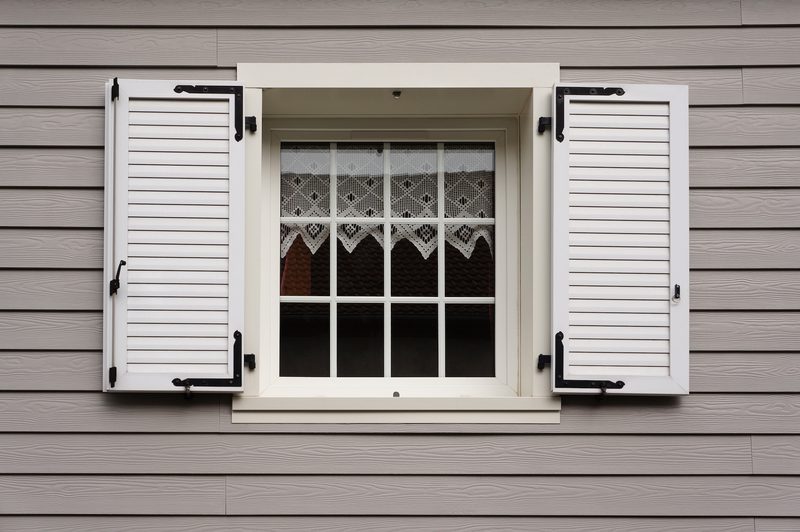
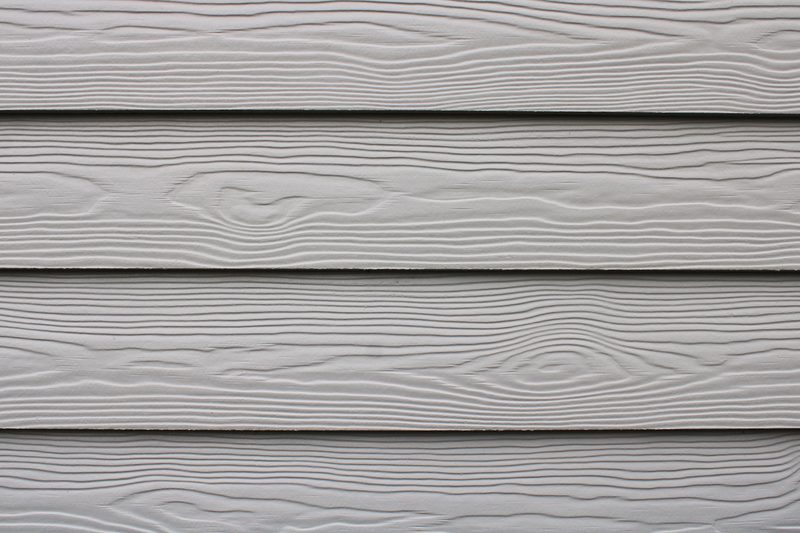
Composite cladding is available in many colours and offers a uniform look that is more ‘consistent’ than solid wood – it does not typically change in appearance over time.
It can be easier to install, too, and because of the plastic element, offers superior performance in the face of threats like moisture, bacteria and fungi. This makes it more durable and dimensionally stable outdoors. It does not need any treatment.
However, it’s undeniable that you sacrifice a great deal of natural beauty with composite cladding. While there are many great options that do an admirable job of attempting to mimic the look of wood, it’s not quite the real deal.
Project planners should also be aware that while a quality composite cladding will be made of recycled plastics, it is not fully biodegradable, like solid wood. This means your project will not be as environmentally optimal as possible – an increasingly crucial consideration for many specifiers and DIYers.
Also, despite being a lower maintenance option in terms of treatment and cleaning, composite cladding doesn’t last forever and can need replacing after 20-30 years.
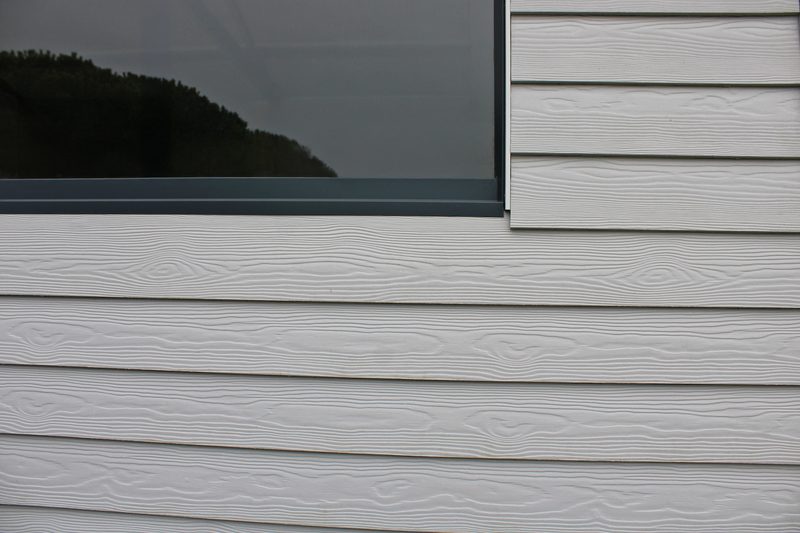


Costs
As a rule, composite cladding is more expensive upfront – there are more stages involved with its manufacture. However, you may recoup some of these costs by avoiding the need for treatment and maintenance.
It’s difficult to make price comparisons between wood and composite cladding – there are so many variables, namely the species of solid wood or the type of the composite chosen.
For a quality solution, however, over the lifetime of the project you’ll likely find that there is not a great deal of difference in terms of cost.
Fire resistance
Untreated solid wood and composite wood products have a Euroclass fire rating of D. This means they are suitable for most applications.
However, unlike composite, wood can be pressure treated with flame retardants during its manufacture to boost this fire rating up to B, which can make it suitable for a wider range of applications, including buildings with a fire safety requirement.
We’ve written in more detail about timber cladding and fire safety ratings.
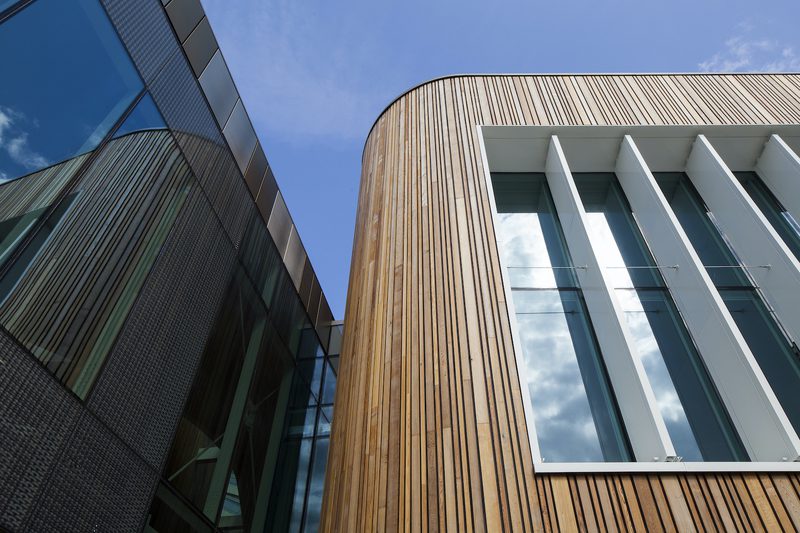
So, will it be wood or composite cladding?
Essentially, your choice will be down to whether you prioritise the natural aesthetic (solid wood cladding), or the convenience of lower maintenance (composite cladding).
At Duffield Timber, we supply a range of solid solid wood cladding, machined from high-quality, sustainably-sourced species to a range of designer profiles.
All of our cladding products can be sustainably pre-finished and/or fire treated before delivery, ensuring top-notch outdoor performance over the long term.
To start your project, browse our cladding range or contact our team using the button below.
